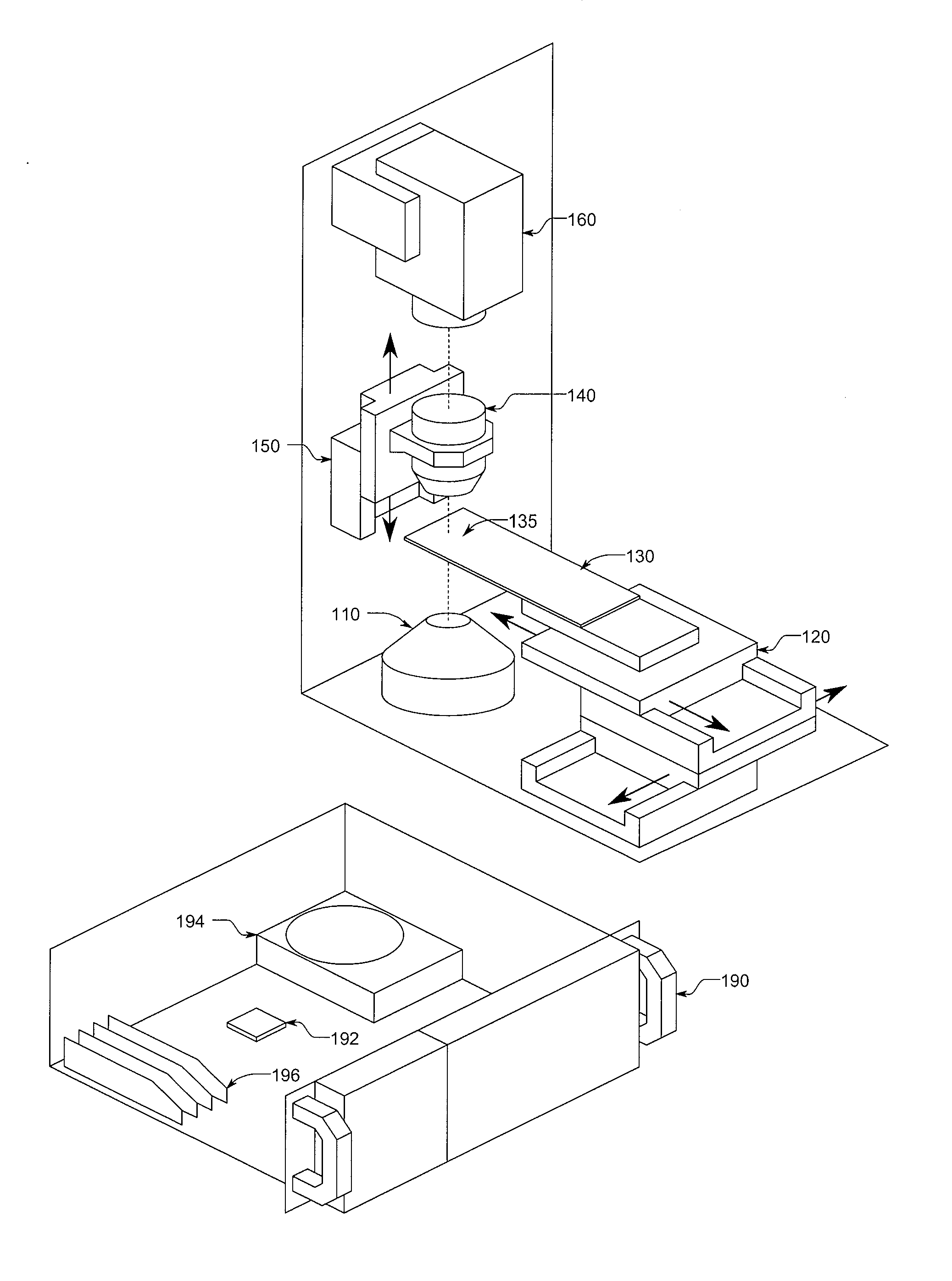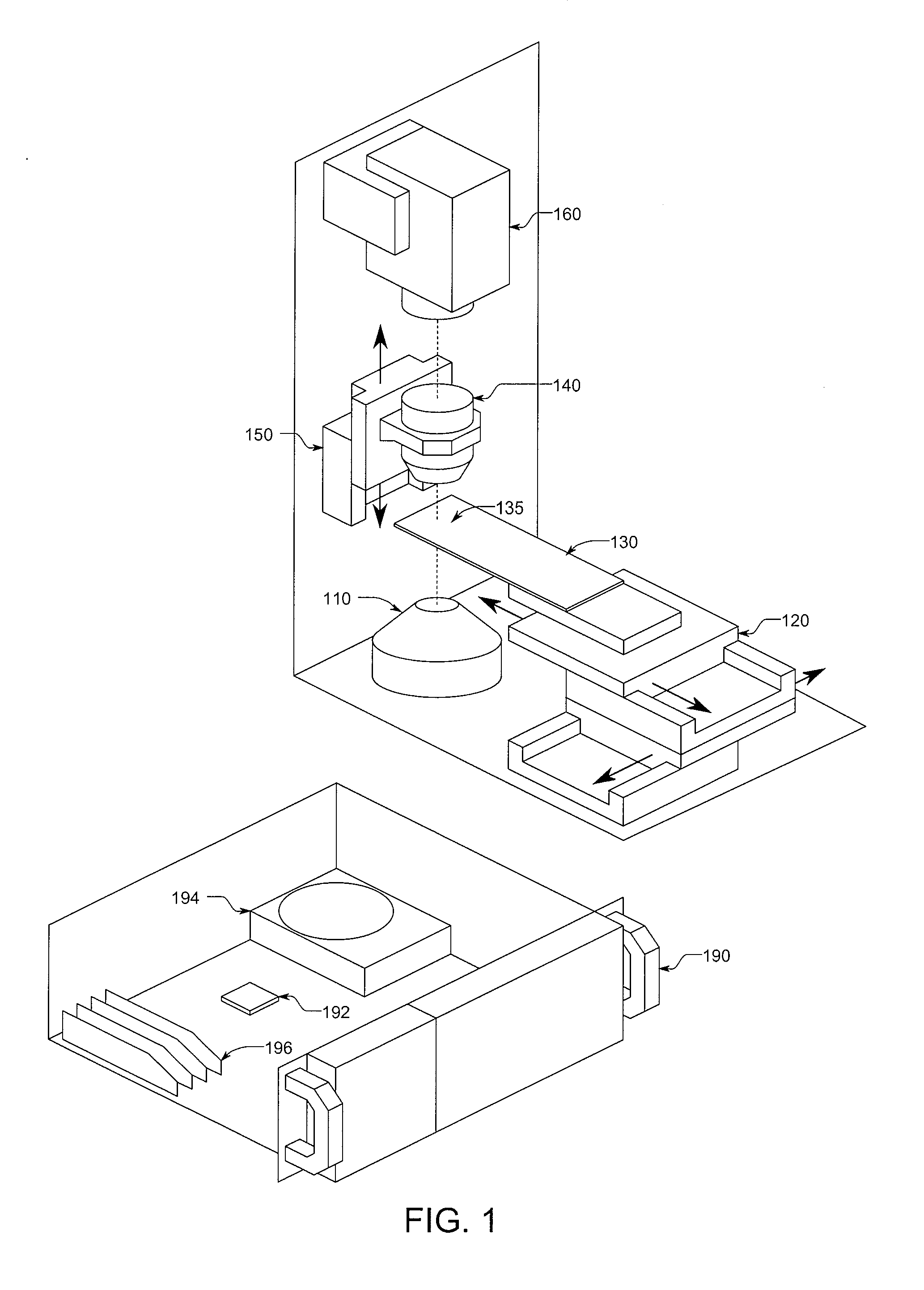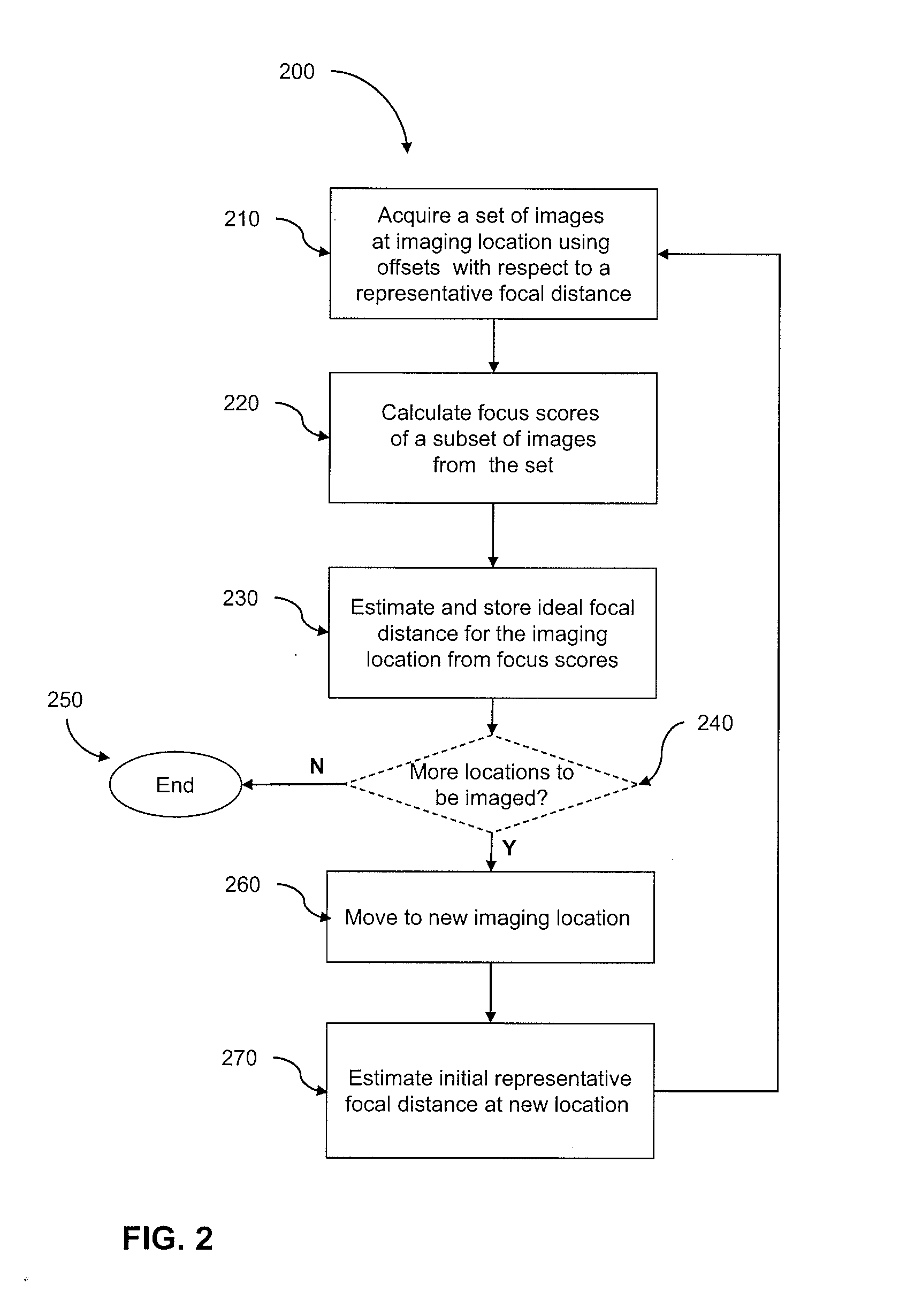Fast Auto-Focus in Imaging
a technology of auto-focus and imaging, applied in the field of electronic imaging systems, can solve the problems of inability to account, time-consuming acquiring multiple images, and inability to fine-tune the focal distance at each location, and achieve the effect of progressively reducing the error of association estimation
- Summary
- Abstract
- Description
- Claims
- Application Information
AI Technical Summary
Benefits of technology
Problems solved by technology
Method used
Image
Examples
example
[0068]The following example describes an application of the present invention for imaging a biological specimen comprising blood cells using the system 100 described in connection with FIG. 1. The following example, which is a continuation of the example described above in connection to FIG. 4, is for illustrative purposes only, and does not limit the scope of the invention described in the claims.
[0069]An automated sample preparation system, for example, an embodiment of the system disclosed in co-pending U.S. application Ser. No. 12 / 430,885, prepared a biological specimen for imaging by depositing a thin monolayer of blood cells on the slide 130. Thereafter, an embodiment of the system disclosed in co-pending U.S. application Ser. No. 12 / 943,687 fixed, stained, rinsed and dried the specimen on slide 130. This process included staining the cells with Methylene Blue and Azure B. However, the methods disclosed in this document and in the following example can also be used when imagin...
PUM
 Login to View More
Login to View More Abstract
Description
Claims
Application Information
 Login to View More
Login to View More - R&D
- Intellectual Property
- Life Sciences
- Materials
- Tech Scout
- Unparalleled Data Quality
- Higher Quality Content
- 60% Fewer Hallucinations
Browse by: Latest US Patents, China's latest patents, Technical Efficacy Thesaurus, Application Domain, Technology Topic, Popular Technical Reports.
© 2025 PatSnap. All rights reserved.Legal|Privacy policy|Modern Slavery Act Transparency Statement|Sitemap|About US| Contact US: help@patsnap.com



